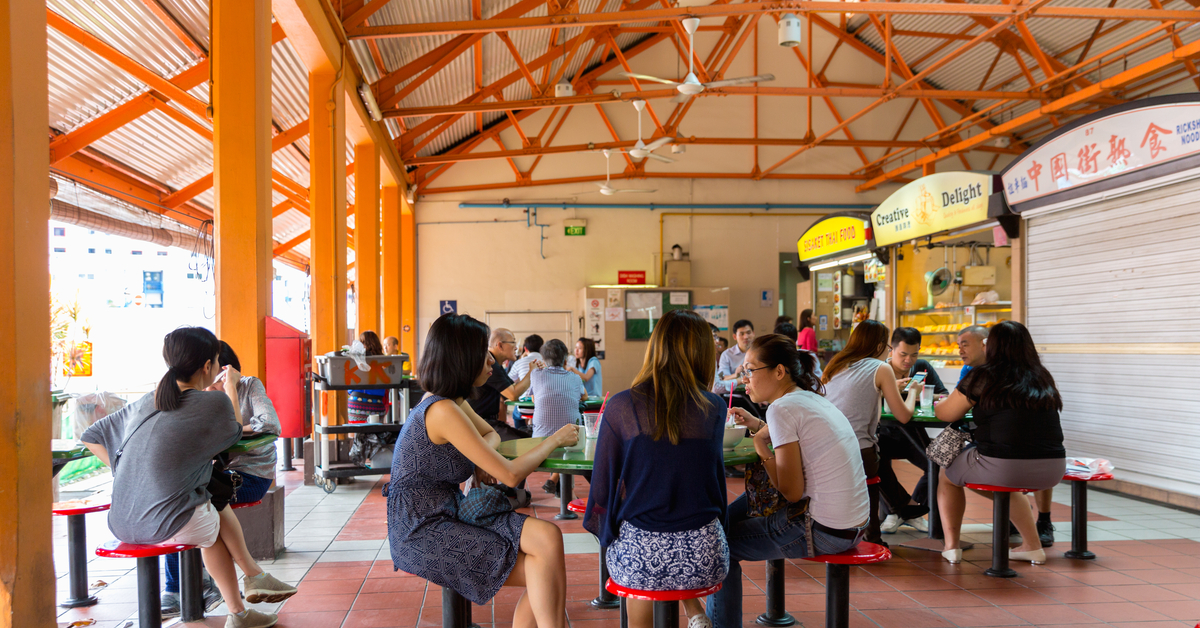When I was young, I always thought that the laminated letters “A, B, C, and D” at food stalls were a grading system for the quality of the food.
This confused me somewhat, as one Chicken Rice stall with an A grade for many years always sold chicken that tasted like tender cardboard.
I later learned that it was a grading system for its food safety practices, albeit at the age of 25.
Since 1997, food establishments have been given grades of “A”, “B”, “C” or “D” annually for their premises’ food safety.
Now, however, they’ll be given the kind of awards normally reserved for Olympians.
‘ABCD’ Grading in Eateries Will Be Replaced With ‘Bronze, Silver & Gold’ Awards from 2023
Under a new licensing framework, eateries will be granted “Gold”, “Silver” or “Bronze” awards instead, based on their track record over a number of years.
As the Singapore Food Agency explained, the current system provides only a “snapshot reflection” of an eatery’s food safety and hygiene standards, as it gets graded every year.
So, an eatery could have several pigeons pooping in its food one year and get a D, and clean up their act the next year and get a B. But those pigeons could always return if the stall owners become negligent again.
This is why the new grading system will evaluate an eatery’s food safety and hygiene standards over several years. It will also take into account other factors like whether it has appointed food hygiene officers.
The Safety Assurance for Food Establishments (Safe) framework is expected to kick in from 1 Jan, 2023, affecting an estimated 23,000 eateries that include caterers, restaurants, bakeries, and food manufacturers.
How to Get Gold?
To qualify for any of the three awards, eateries must:
- not have any major food safety lapses over a period of time
- have a food hygiene officer and advanced food hygiene officer employed
- implement a food safety management system
Getting a gold here may be more difficult than in the 100m final at the Olympics.
See, the three awards correspond to a three-, five-, or 10-year licence duration, with the longer the duration, the higher the award tier.
This means most eateries would have to go 10 years without a major lapse to get a gold, five years to get a silver, and two years for a bronze.
This also depends on the type of eatery an operator runs. Here are the three categories into which food establishments are placed:
- Category A – involved in significant food handling practices with higher food safety risks
- Category B – those involved in moderate food handling and food storage practices with lower food safety risks
- Category C – those involved in minimal food handling and food storage practices that have negligible food safety risks
Since Category C eateries have negligible food safety risks, they only need to go five years without a major food lapse to get gold. Those in Category A and B, however, need to go ten years. Those in Cat A also need to appoint a food hygiene officer to get any award.
Examples of major lapses include causing a foodborne outbreak, being convicted in court for offences against SFA’s regulations, or a suspension of the licence.
As for new establishments, or those who have gone less than two years without a major lapse in Cat A or B, they will be granted a one-year license with no award.
Read Also:
- NOC’s Sylvia Chan Makes Second Apology After Interview Video With Xiaxue Was Released
- Pet Grooming Salon Apologises After Being Called Out for Handling Poodle Roughly
Featured Image: 2p2play / Shutterstock.com



